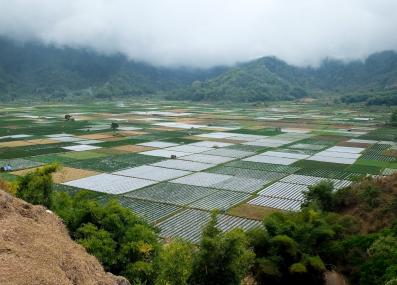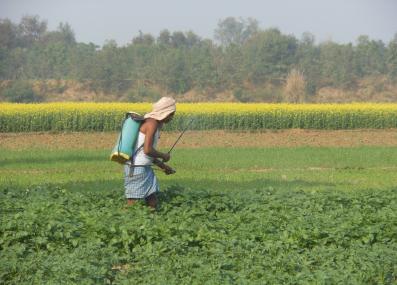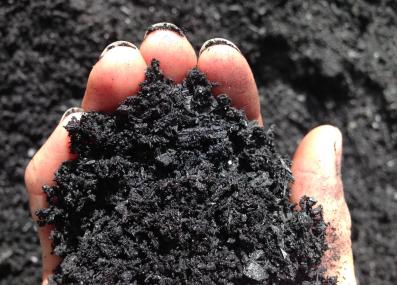Have a question?
Is it possible to have low-carbon beef?
Beef will always contribute more to climate change than fruits or vegetables, but there are ways to include some cattle ranching in a well-balanced agricultural system, with less impact on the climate.
September 4, 2024
Raising cattle is a significant source of climate-warming greenhouse gases. In fact, producing beef emits more greenhouse gases, pound for pound, than any other major food source.1
Eating less beef is a straightforward and effective way to limit the climate-warming impacts of our diets, says Greg Sixt, director of the Food and Climate Systems Transformation (FACT) Alliance at the MIT Abdul Latif Jameel Water and Food Systems Lab. But, he adds, that doesn’t mean that zeroing out cattle ranching is the best way to build an agricultural system that benefits people and the planet.
“Focusing on beef production alone misses the point,” he says. “Food systems are complex. Yes, beef production has significant negative impacts to the climate and environment, but at the same time, you can’t have healthy agroecosystems without livestock. They are essential for maintaining healthy grasslands, providing economic value in landscapes on which it is not viable to grow other crops, and are nutritionally and culturally important.”
There are several ways that raising cattle produces climate-warming emissions. First, cattle release methane, a potent greenhouse gas, as they digest their food. This feature of their digestive system is why beef (along with goat and sheep) contributes far more to warming the climate than other meats like pork or chicken. Many farms also dispose of cow manure in large, open lagoons. As the manure breaks down, the liquid in these lagoons releases more methane.
Even the land that cows are raised on contributes to climate change. Agriculture—and beef production in particular—is a big driver of deforestation.2 When forests are cut down, they release the greenhouse gas carbon dioxide (CO2).
And beef consumption is rising, meaning ever more land and cattle go into producing it. Americans eat a lot of beef, about four times the global average.3 Giving up that beef would do nearly as much to slow climate change as giving up driving a car.4
But not everyone is prepared to go without beef—and, says Sixt, it’s not necessarily fair or even beneficial to ask everyone to do so. In some low- and middle-income countries, people actually need to eat more meat to achieve healthy diets, and livestock production can be an important income stream for small farmers.
Producing beef that damages our climate as little as possible, he says, requires very different ways of caring for the land and raising animals. What that looks like will depend on the ecology of a specific region, as well as the cultural and economic needs of the area. “With the right production practices, we can produce more sustainable beef—just less of it,” says Sixt. “It may still lead to net-positive carbon emissions, but producing beef in regenerative ways can play an important role in building the types of food production systems we need in a changing climate.”
One “regenerative” practice is to change how cattle are grazed. Raising cattle can disturb landscapes, but certain types of grazing, known as rotational grazing, can also restore landscapes. If cattle are grazed intensively on a piece of land for a short period of time, then moved so the previous piece of land can recover, that can help the soil absorb more carbon from the atmosphere and support healthy grassland ecosystems.
There are some drawbacks to this system. It takes more labor and land, for one, meaning we can likely only have lower-carbon beef in a world where we raise less of it. In that system, beef would also cost more. “We have essentially externalized many of the ecological and health costs of beef consumption in this country,” says Sixt. “If you start to internalize those costs, then we would be paying a higher price per pound of beef.”
“It’s about balancing tradeoffs,” he adds.
There are other, more experimental ways to achieve lower-carbon beef. Researchers are studying feed additives like seaweed, for example, which could significantly reduce methane by changing how a cow’s digestive system processes food.5 But it’s not obvious how realistic this is at commercial scale.
“If you're concerned about: Is the meat you're eating ecologically sound or not? The simple solution is, consume less of it,” says Sixt. “Because right now, the vast majority of it is not produced in regenerative ways.”
1 Poore, Joseph, and Thomas Nemecek, "Reducing food’s environmental impacts through producers and consumers," Science, Vol. 360, Issue 6392, 2018, doi:10.1126/science.aaq0216.
2 Hosonuma et. al., “An assessment of deforestation and forest degradation drivers in developing countries,” Environmental Research Letters, Volume 7, October 2012, doi:10.1088/1748-9326/7/4/044009; Cederberg et. al., “Including Carbon Emissions from Deforestation in the Carbon Footprint of Brazilian Beef,” Environmental Science & Technology, January 2011, doi:10.1021/es103240z.
3 "Per Capita Meat Consumption by Type, 2021." Our World in Data, 2023, summarizing data from the Food and Agriculture Organization of the United Nations.
4 Comparing data from multiple sources. 37.8 kg of beef consumption per year (see citation 3), times 99.5 kg of CO2e emissions per kg of beef (see citation 1) is 3.76 metric tons of CO2 equivalent emissions per year. This is closely comparable to the average gas-powered car’s 4.6 metric tons of CO2 per year, according to the U.S. Environmental Protection Agency, “Greenhouse gas emissions from a typical passenger vehicle,” updated August 28, 2023.
5 Roque et. al. "Red seaweed (Asparagopsis taxiformis) supplementation reduces enteric methane by over 80 percent in beef steers." Plos One, March 2021, doi:10.1371/journal.pone.0247820.







